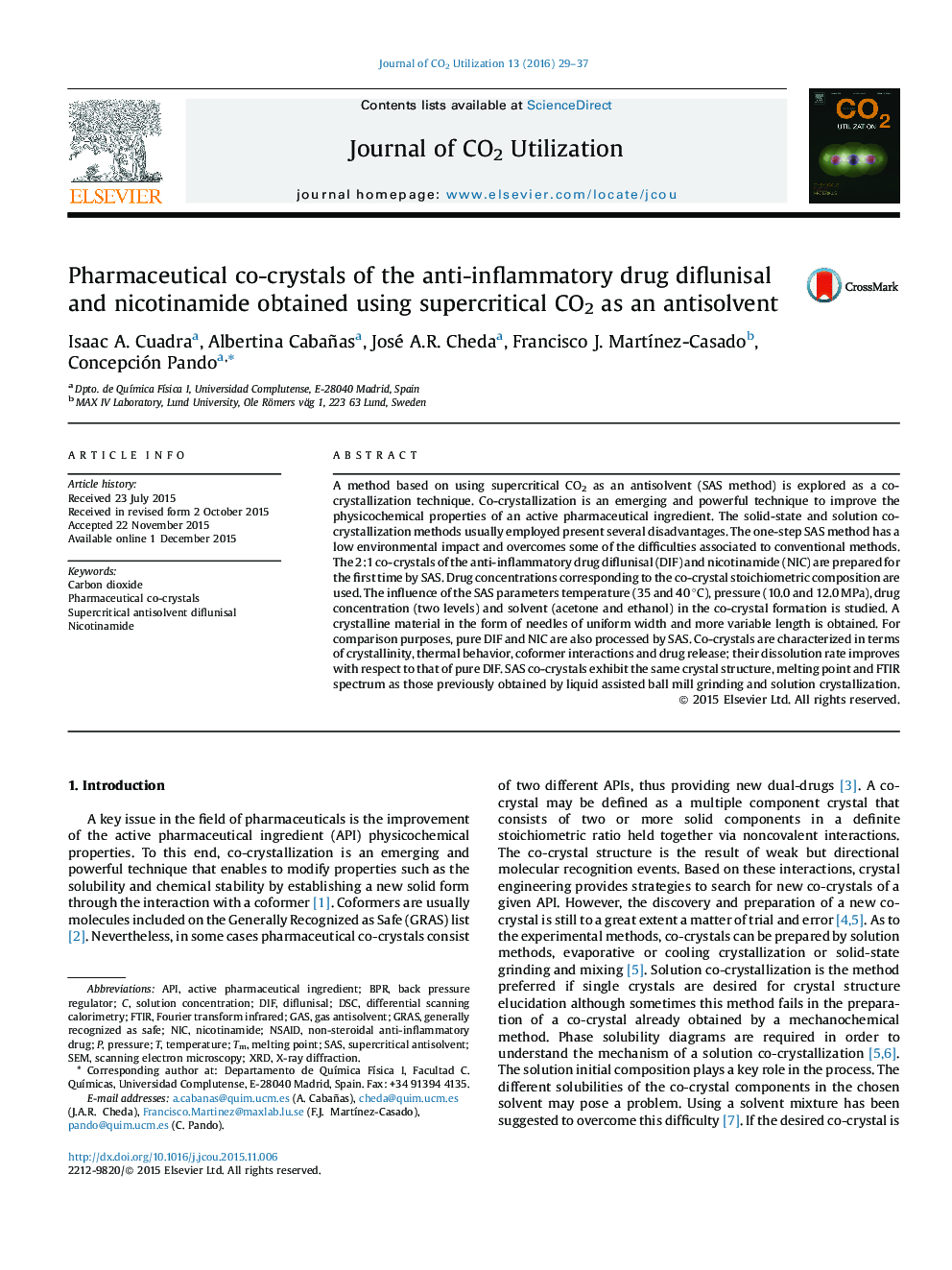| کد مقاله | کد نشریه | سال انتشار | مقاله انگلیسی | نسخه تمام متن |
|---|---|---|---|---|
| 63627 | 48245 | 2016 | 9 صفحه PDF | دانلود رایگان |
A method based on using supercritical CO2 as an antisolvent (SAS method) is explored as a co-crystallization technique. Co-crystallization is an emerging and powerful technique to improve the physicochemical properties of an active pharmaceutical ingredient. The solid-state and solution co-crystallization methods usually employed present several disadvantages. The one-step SAS method has a low environmental impact and overcomes some of the difficulties associated to conventional methods. The 2:1 co-crystals of the anti-inflammatory drug diflunisal (DIF) and nicotinamide (NIC) are prepared for the first time by SAS. Drug concentrations corresponding to the co-crystal stoichiometric composition are used. The influence of the SAS parameters temperature (35 and 40 °C), pressure (10.0 and 12.0 MPa), drug concentration (two levels) and solvent (acetone and ethanol) in the co-crystal formation is studied. A crystalline material in the form of needles of uniform width and more variable length is obtained. For comparison purposes, pure DIF and NIC are also processed by SAS. Co-crystals are characterized in terms of crystallinity, thermal behavior, coformer interactions and drug release; their dissolution rate improves with respect to that of pure DIF. SAS co-crystals exhibit the same crystal structure, melting point and FTIR spectrum as those previously obtained by liquid assisted ball mill grinding and solution crystallization.
Figure optionsDownload as PowerPoint slide
Journal: Journal of CO2 Utilization - Volume 13, March 2016, Pages 29–37
